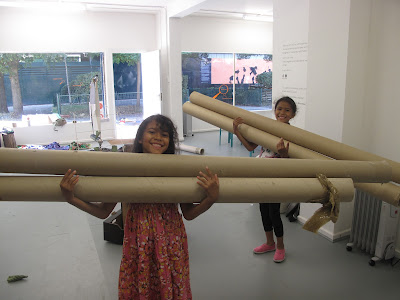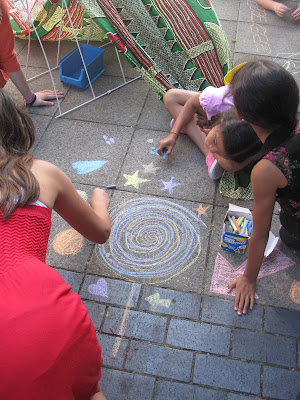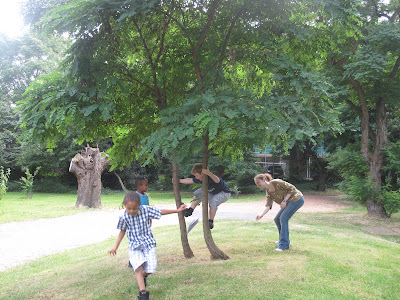Since the Shop of Possibilities opened back in June something I have noticed about the way the children are playing is that it often includes an element of destruction. Whilst this has mainly been boys, it is not exclusively so, and it is also not purely destruction for destructions sake. There is often a ‘what’s inside’ type of curiosity, where you can see the child is trying to see how something is made. They will break something into pieces and when they see what is inside the game is over.
Some children destroy things in order to create an alternative. For example we had a child who decided to take a plastic bottle that had been filled with water and wrapped in parcel tape and see how he could get the water out without simply just cutting off the tape and unscrewing the lid. This process included dropping the bottle from head height, jumping on the bottle and then the method which proved most successful – using a big wooden hammer!

The process seems both enjoyable and satisfying, and exciting because this type of behaviour would be forbidden in a lot of other contexts. However it does provoke different reactions in adults, some who feel it is a step too far and others who believe that it is fine providing they are not putting themselves or anyone else in danger. I think it does slightly depend on the child, it should be fairly easy to sense the motivation behind the destruction, and in all the cases at the shop so far it has been controlled and I don’t think there has been any aggression or violence behind it, instead there is a strong sense of curiosity and a need for an output for physical energy.


The shop itself is all about the re-interpretation of old, unwanted everyday items, and what better way to re-imagine an old object than to start by exploring the elements which make it up to begin with. As children become more used to (and skilled at using) computers in their everyday lives, including computerised toys, mobile phones, I-pods and others such items, the understanding of how things work decreases as these objects get smarter and smarter.
As David Elkinsays in The Power of Play: “It is at least possible that children’s inability to figure out how their playthings work can dampen their scientific curiosity.” Therefore I see this continued level of curiosity into how things are made as a positive sign. I’ll start to worry when none of the children seem interested in breaking things apart anymore.










































